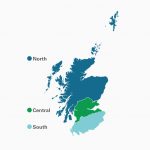Virgin Media O2 to Upgrade Existing UK Network with Full Fibre

The latest combined Q2 2021 results from broadband ISP, TV and mobile operator Virgin Media and O2 has, among other things, revealed that they plan to completely upgrade their existing Hybrid Fibre Coax (HFX) network – some 14.3 million premises – with Fibre-to-the-Premises (FTTP) broadband tech by the end of 2028.
Until now VMO2’s fixed line network has been largely dominated by their existing HFC (cable) technology, which thanks to the latest DOCSIS 3.1 upgrade is capable of gigabit broadband download speeds, although upload performance remains poor and over the longer-term HFC may become less competitive.
Indeed, much of their recent network expansion under Project Lightning has already switched to building FTTP (1.2 million premises so far), which they say is technically “capable of delivering symmetrical 10Gbps download and upload speeds, and beyond.”
Advertisement
The value accretive decision to go full fibre (XGSPON) in even existing network areas, which is said to be backed by VMO2’s shareholders (Liberty Global and Telefónica), has been taken following recent deployment trials, a thorough analysis of alternative network scenarios and the “potential opportunity” to enter the fixed wholesale market (i.e. becoming a major competitor to Openreach, which is building FTTP to 25 million premises).
During this transition, VMO2 said it would “continue to maintain and develop its cable network during the upgrade period“, which includes meeting its 2021 gigabit targets and utilising the network’s multi-gigabit capability to deliver speeds above 2Gbps in future (see recent trials).
The Upgrade Cost
At this point you might wonder how much this will all cost and VMO2 provides an answer to that too. By utilising the company’s fully-ducted network, which are the tubes through which fibre can be laid, the upgrade will be one of the UK’s most efficient fibre rollouts, costing ~£100 per premises passed. Customer installation costs will be in addition to this, with installs operated on an on-demand basis.
The above compares to approximately ~£60 per premises for an upgrade to a future full DOCSIS 4 cable network and eliminates the need to invest in future versions of DOCSIS as the demand for faster speeds and capacity continue to rise.
Advertisement
Total upgrade costs over the estimated 7-year life of the project will represent a “modest annual increase to Virgin Media O2’s current capital expenditure budget of approximately £2 billion per year.” These expenditures do not adjust for any of the revenue benefits that are expected to accrue to VMO2’s consumer, enterprise and wholesale businesses from the FTTP upgrade.
Lutz Schüler, CEO of Virgin Media O2, said:
“Our mission is to upgrade the UK, and we are doing exactly that. This major new fibre upgrade programme will see us begin the next evolution of our network, building on the investment, firepower and leadership we already have and ensuring we’re fibre fit for the future.
Right now, we have the UK’s leading gigabit network, and this upgrade means we’ll be even stronger for the decades ahead, pursuing new opportunities and putting words into action
In 60 days since the formation of Virgin Media O2, we have achieved a lot, but this is just the beginning. With strong foundations for growth in place, we will boost connectivity, provide greater choice and be a challenger the country can count on.”
Just to clarify, VMO2 will continue to run their existing HFC network until 2028 and even beyond, thus what they’re doing here is deploying FTTP through their existing ducts and across the same coverage area, which is more about preparing for the decades ahead. At present, no plan has been announced for the removal of their HFC cables, but that does now seem somewhat inevitable (running both networks side-by-side is expensive).
The shift to full fibre will also improve network capacity, and that may also benefit HFC customers. The same impact may occur for any customers who choose to migrate from HFC to FTTP in the future. Network congestion has become an issue in some parts of VMO2’s network, so this might finally help to resolve that.
VMO2 have also recently spoken of their intention to invest £10bn over the next 5 years to upgrade to 5G mobile and expand their gigabit-capable fixed line FTTP broadband network to a further 7-8 million homes (e.g. rural or semi-rural areas). Sadly, today’s announcement merely confirmed that, outside the existing Project Lightning plan, they were still “actively exploring further expansion opportunities to reach millions more premises, with discussions ongoing with strategic and financial partners.” We can’t help but wonder whether the extra costs from their new FTTP upgrade might impact this plan.
Advertisement
The Latest Q2 2021 Results
During the past quarter, VMO2’s network coverage was extended to another 89,000 premises (FTTP) and their internet access base added (net) +35,700 customers (down from +38.5k last quarter) to total 5,494,100. Otherwise, the big news since the last set of results has of course been the finalisation of Virgin Media’s mega merger with mobile operator O2 (here), which has subsequently adopted the “new” brand identity of VMO2, although for now the two brands continue to sell products via their separate websites.
Elsewhere, there were a series of other interesting changes during the last quarter, such as Virgin Media’s move to trial faster upload speeds and a “free broadband” package (here). On top of that, the operator also began to trial the use of recycled materials in their network expansion (here), doubled the upload speeds for business customers (here) and began harnessing the Government’s gigabit vouchers to help upgrade rural villages (here).
Quarterly UK Customer Figures for Q2 2021
5,494,100 Fixed Broadband – (up from 5,458,600 in Q1)
40,952,500 Mobile inc. Wholesale – (up from 3,407,700)
The operator also has 3.4 million Video (TV) and 4.4 Telephony connections, but they no longer give out the full figures for those, so we can’t easily compare quarterly change any more. Otherwise, we’ve posted our usual summary of their project lighting network expansion, which has so far reached an additional 2.5 million premises since it began a few years back (1.2m via FTTP).
Project Lightning Rollout Since 2017
Q2 2021 = 89,000 Premises
Q1 2021 = 80,000 Premises (impacted by COVID-19 lockdown)
Q4 2020 = 115,000 Premises (some impact from COVID-19)
Q3 2020 = 125,000 Premises
Q2 2020 = 93,000 Premises (impacted by COVID-19 lockdown)
Q1 2020 = 93,000 Premises (some impact from COVID-19)
Q4 2019 = 154,000 Premises
Q3 2019 = 119,000 Premises
Q2 2019 = 130,000 Premises
Q1 2019 = 102,000 Premises
Q4 2018 = 144,000 Premises
Q3 2018 = 109,000 Premises
Q2 2018 = 118,000 Premises
Q1 2018 = 111,000 Premises (likely impacted by heavy snow)
Q4 2017 = 159,000 Premises
Q3 2017 = 147,000 Premises
Q2 2017 = 127,000 Premises
Q1 2017 = 102,000 PremisesNOTE: Virgin’s UK network now covers a total of 15,476,400 UK homes passed.
The Lightning build costs continued to trend down with Q2 periodic cost per premise (CPP) of £576, down from £619 in Q2 2020, as use of Openreach passive infrastructure has increased (i.e. running fibre through their existing cable ducts); cumulative Lightning CPP has also trended down and is now at £660.
On the financial front, the newly merged VMO2 reported total quarterly revenue of £2,542.6m (down from £2,505.1m in the previous quarter). Otherwise, it was noted that 97% of their fixed broadband subscribers now take speeds of 100Mbps or more and more than 40% of their broadband customers also take a mobile contract from either Virgin Mobile or O2.
Mark is a professional technology writer, IT consultant and computer engineer from Dorset (England), he also founded ISPreview in 1999 and enjoys analysing the latest telecoms and broadband developments. Find me on X (Twitter), Mastodon, Facebook, BlueSky, Threads.net and Linkedin.
« Parliamentary Committee Starts Scrutinising UK Online Safety Bill
BT Group Grows FTTP Broadband Coverage to 5.2m UK Premises »






















































To me, Vermin’s biggest issue is RFoG. They are using a copper orientated protocol just with a different media. I would gain nothing by switching my gigabit cat6 house wiring to gigabit over SMF, and this is what it feels like. DOCSIS has horrible inherent latency, the modems are crap, the upload is horribly limited, etc.
I know they are obsessed with broadcast TV, but GPON can coexist with this on the same fibre. Hopefully once all the HFC is gone, their obsession with a unified national product portfolio won’t hold the FTTP network (which is currently FTTP in name only) back, and they will be able to dump DOCSIS like the turd it is.
Not quite true, the inherent (access network) latency is ok with 3.0 (subject to utilisation – for example my D3 350mb connection is largely fine because it’s not an over-utilised area), much less an issue with 3.1 (AQM should reduce latency spikes hugely even with local over-utilisation, but only when they switch it on for the upstream which is currently still set to 3.0 even on their gig1 service – at that point you’ll also see UL speeds more competitive with fibre), and is largely eliminated in DOCSIS4.0.
In fact there’s a recent light reading article that suggests that latency on a D4 network could even be better than fibre.
There’s nothing that bad about copper cables assuming no specific issues around interference. D4 latency can be sub 1ms for the access network, and that’s even under load! For me, the cable is important to a degree but I like the fact that CableLabs are constantly evolving the underlying transport mechanisms and making them better.
But I suppose FTTP is cool too.
Vermin? you may want to use the company’s proper name.
So confused about why they have put effort into HFC only to rip it out?
Maybe they didn’t think full fibre rollout would happen so quickly? To me looks like someone’s pointed out they could be obsolete in 10 years time unless they invest.
The D3.1 upgrade was fairly easy/cheap by comparison, but the cost of going to D4 isn’t different enough from doing full FTTP to warrant long-term HFC support. The point is also made that FTTP would be much more attractive to the fixed wholesale ISP market, which is very much a direction they’re going.
With all the full-fibre networks coming online now GPON will be widespread in no time and virgins HFC will be seen as the old copper phone lines,
Virgin is just trying to not get left behind and become obsolete
Sounds like a long-term engineering decision
Enabling full duplexing that is the next part DOCSIS spec like normal ethernet cables would fix the upload issue in the short term
Long-term just roll out full fiber would mean a service with almost no latency, 10Gb up/down, less hardware to fix plus service resell to 3rd party providers and better network integration
The migration to FTTP means VMO2 will also have the option of extending it’s network by aquiring smaller altnets.
Aye, suspect someone found an old copy of the NTL playbook when doing due diligence on the VM02 merger – easier to acquire to expand than build yourself!
Might be an expensive mistake to take over an alt net FTTP. Who knows what standard the build is? Virgin O2 need to tread carefully with that approach. Might be quicker and better to control the build yourselves.
Good thing about FTTP is that there’s far less to go wrong compared to cable networks.
No worries about power levels, the split and frequency ranges of the amplifiers, splitters, isolators, etc.
Makes sense, I guess the only inevitable downside is 14 million more overbuilds in areas that already have a fast option available, and how that impacts expansion in terms of labour and material.
Not sure it’s necessarily an overbuild – VM won’t want to run two networks side-by-side so no doubt the approach will be to deploy FTTP, switch over existing customers and then rip out the coax cable.
NW, Aye I didn’t mean overbuild in the sense of competing Fttp, more the fact of overbuilding an existing gigabit capable network rather than new build to premises that don’t have it at all. Its their network, just doesn’t add anything to the national goal.
The national goal isn’t VM’s problem. They would have been doing extensive work to upgrade the HFC network anyway. This is actually relatively little extra cost and, hence, resource.
Will they be using telegraph poles?
They’ll be using the same ducts they already use as they are the only operators in the own ducts which leaves space for the Fibre.
Some areas VM02 will utilise the new PIA system which is where Openreach allows them to use the poles to pull their cables to more and more homes across the UK. Meaning no construction work for underground ducting. In areas where HFC is the main infrastructure and the ducting is already in place, VM02 will remove the old Coax network, upgrade the cabinets to RFoG FTTP, pull microducts and blow fibres to properties.
Wonder if this has anything to do with the price of copper going through the roof.
Probably has more to do with CityFibre and the other altnets putting the sh*ts up both VMO2 and Openreach with the sheer speed and scope of their plans.
Virgin hasn’t been installing copper on new builds for quite some time now, instead using FTTP with RFoG to deliver copper-less DOCSIS.
Only a few months ago the head honchos at Liberty Global were saying the existing copper infrastructure was fine and had decades left (which is to an extent true)…
City Fibre and alt nets speed of build frightening Openreach.
Good joke.
Openreach 5 million plus premises available to order today and added 550,000 premise in the last quarter. TTB says CityFibre only have 550,000 or so premises able to order for 3 years of work (as of June 2021).
Serio1usly question anyone who says that Openreach aren’t building at speed. Given all the metrics they are miles ahead and building at a pace that the large alt nets can only hope for.
So recently had virgin installed and not sure if it is FTTP or hfc I have fibre to a brown box on the outside of my house all spooled up inside then it’s coax into the back of my hub 4 so is that hfc or FTTP?
Anything that can give faster downloads and upload and lower latency I’m all for.
That would be FTTP, fibre to the premises.
HFC is fibre to a node then copper to the premises.
Interesting that Virgin estimate a cost of £100 per prem, whereas Openreach say their FTTP build cost is at the lower end of £300-£400. Altnets are quoting up to £600 per prem. Is the £100 realistic? Why do they think they can deploy as such a low cost? Surely quality of Virgin ducts are at best comparable to Openreach ducts?
I guess as the ducts are already there?
The oldest VMO2 ducts probably date from the 1990s while many Openreach ducts are decades older and may contain other ISP’s fibre.
Also VMO2 customers are on average much closer to their street cabinets than Openreach customers.
Ducts to every HFC customer, cabinets within 150 metres so no need to put any splitters or manifolds on poles or in chambers in the ground.
£100 per prem passed is a surprisingly low number. Any insight on their planned architecture and how they can achieve this?
Head end, splitter, manifold, planning/traffic mgt etc. costs alone can reach £100 without any blown fibre costs.
Presumably they will either need new street cabs (as keeping hfc running) or are taking fibre further back to a more remote head end.
There may be room to install GPONs underground in the duct access chambers next to the street cabinets.
Ignore that, I doubt they’ll put powered kit underground.
Maybe the per-prem installation cost only includes up to the GPON and the fibre to the prem is part of the on-demand customer installation which may include an installation fee.
They could even make FTTP a pre-requisite for, say, a WiFi 6 router upgrade. They’ll eventually need to upgrade customers for free so the HFC network can be retired.
@Winston Smith GPON splitters (manifolds, CBTs etc.) are all passive and will likely be underground. Virgin have been using PON cabinets though. Hopefully they stop using the gigantic VHUB cabinets which they have used for RFoG.
Make as much use as possible of the existing cabinets they have within 150 metres of most of their customers.
This’ll be the network build. To actually install customers will be additional cost of course but this is just running fibre to cabinets that are currently all coax alongside getting the laser one side and the splitter the other.
Splitters are super cheap and won’t be a need to provision 1:1 replacement, can slowly free up cabinet space by retiring HFC tap banks as customers migrate.
I wonder if Virgin will use this as an opportunity to upgrade bits missed from streets as part of the original cable rollout by their predecessors. (which are not in scope for Project Lightning)
Sadly, I suspect not..
The only thing it changes is removing a distance limit, though it won’t really be doing that unless VM build in a different way from the new FTTP build.
It’ll make it easier to infill larger areas using PIA but a few homes the same cost issues are there.
I wonder what this means for those parts of the country that have not yet officially gone DOCSIS 3.1? Might they just kill the existing 3.1 program and recable those areas first?
Most of the work is actually done in remaining areas (even if not enabled) so they will still do the gigabit 3.1 work. VM say on track by end of the year….
They made a commitment to extend the Virgin network to at least 1m more premises within 12 months of the merger deal closing. If they have any intention of meeting that commitment, they’ll need to start ramping-up the scale of project lightning very soon.
Do you know if this will be their usual DOCSIS over fibre for FTTP or a more like what CityFibre and other altnets are doing.
XGSPON.
Fibre to everybody in their footprint in 2028… What is the chance of that actually happening? I’m a little skeptical.
I’d say they’ve got a good shot. The myriad predecessor cable companies that ultimately became Virgin Media, rolled out their networks from scratch over a 10 year (or so) period, which AFAIK covers the majority of VM’s current footprint. 7 years 4 months doesn’t sound too unreasonable for this upgrade.
They have elaborated it a bit. Homes will be connected on demand, so only a small amount of homes will be FTTP in 2028. Let’s see how the project progresses. 🙂
You should ring up the sales team and ask them about it, a friend couldn’t get VM to his property, it stopped about 10 houses away.
They sent an engineer out to see if it was doable, and he had it fitted within about a month.
VM02 Need to seriously think about there current FTTP customers current router. The current FTTP modem converts to DOCSIS anyway to be able to use with their home broadband router. What’s the point in going VM fibre when it’s converted to DOCSIS anyway! Customers aren’t really aware of this.
Anything that isn’t fully fibre shouldn’t be sold as a fibre product! Totally misleading the non techy customers!
Well they’re converting to actually PON technology now they only used RFOG so that they could use the same hardware and didn’t need to have two completely different packages and pricing systems between the two different networks.
RFoG in their FTTP areas is still fibre to the home and not HFC which uses coax.
Fibre just means fibre to the home, not the protocols running over it.
From what I read, the new plan is that its a new network using infrastructure of the old (ducts, pavement chambers) that will run in parallel with old until customer is allowed to request a migration to the new network. As more customers migrate, the push will then be on to close down the old HFC network. If they use pavement chambers for smaller equipment, it may mean less green cabinets required (telephones will be VOIP anyway so won’t need the old copper telephone connections). Splitting nodes for over-utilisation won’t be required in the new network or re-segmentation work that happens today on the old network.
You’re going to be really disappointed when you don’t get a strand of fibre to connect to your own equipment.
I agree
I have an awful experience with Virgin Media, and O2 separately.
Virgin Media is my only choice here for anything north of 2mbps ADSL. As soon as I can change Virgin Media for anything else, I will.
Their network, albeit old isn’t that bad but seems to have severe bottle necks and ageing equipment. 3 different cities I’ve lived in, around the south and the north of the UK all have the same reliability problems – it’s hard to stomach at the cost they expect for the “speed” they actually deliver.
Hopefully I can get OpenReach FTTP at some point so I can drop them entirely.
Also I think was more concerning is the fact that we need to get latency down over the internet not just speed I don’t want to wait years for fttp
The only disappointment with bt full fiber is the upload isent symmetrical not even sure virgin will be either I’d rather go with an alternative net if I can hyper optics is hear but yet to see them buge to my area yet it says there evaluation of the building has begun but this could be years befor thay even bother installing tbh I give up with these company’s thay promises stuff thay don’t vaule there loyal coustmers and waiting till 2028 is way to long for full fiber when bt will install it by 2024 latest the fact that thay have more man power now with the merger is a joke that it will take that long it’s coz virgin is to busy being greedy and expanding insed of giving there loyalty coustmers full fiber 1st what a joke
Virgin Media have already started updating the existing network HFC and my area I live in
Dumbarton as I noticed some workmen outside my house and I asked them what they were doing with virgins ducks he said they were getting ready to pull fibre through
and they were only just installing the Rope to pull the fibre through today
Who cares thay had plenty of time to do this and guess what BT is going to be here a lot faster with full fibre then virgin will iv only just got the 1gig up load still lame
To everyone there are actually upgrading the entire network even existing customers to fttp but it’s going to take a long time
Are there any noises coming out of VMO2 about roll out plans for the FTTP network? I realise they have only just finished their DOCSIS 3.1 upgrade. That said, if they want to take on BT in the wholesale market one would expect them to want the best possible network to encourage as many ISPs to offer packages on their network.